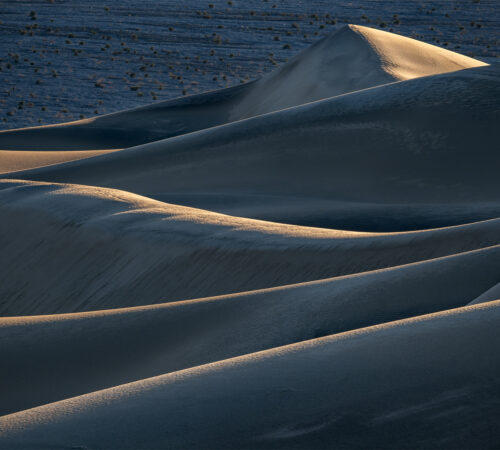Reformatting Memory Cards

Dear Bubbles,
Do I need to format my memory cards? I have not done this with each card in the past. I have so much to learn!
~Toni
Dear Toni,
I’m so glad you’re excited to learn new things!
Yeppers! You do. So that your camera and memory card “talk” well together, it’s a good idea use the Format function to format a brand new card in your camera before your use the card. If you have used memory cards with images on them, it’s better to use the Format function in the camera to eliminate these frames from the card than it is to Delete (or Erase—cameras differ in their terminology) either in camera or via your computer—so long as you have downloaded and backed up the photos you have on your memory card(s).
Here’s why: Every time you make a picture, your camera records bits of data onto that card. Every little bit of data is like little pieces of dirt. It builds up and up and up on your card over time as you make more photographs.
The Delete function—whether deleting your photographs one by one by using the Trash Can button on the back of your camera or all at once using the Erase All function in your menu set-up—cleans most, but not all of the dirt away. It leaves a little residue (data). It also leaves any images you have marked as “protected” on the card.
Over time, you’ll go make more pictures on that same card, get more data/dirt, do more deletes, get more residue. Within a few years, that residue left behind can build up so much, and/or create unusable empty spaces between residue (which is formally called fragmentation), that it corrupts the card. Once the card is corrupted, you generally can’t read, write, or access the data from it. If you can, it’s spotty and unreliable. And temporary. That card is toast.
To try to avoid this scenario, we format the memory card. Or reformat if we’ve used the memory card before. We format, or reformat, using the Format function in our camera. This is akin to aiming a fire hose at close range to your card to eliminate all the dirt (data). All of it. RAW data, JPG photos, videos, data directories, file names, card names, fragmentation, the whole enchilada. Even files you have previously marked as “protected”, gone. (Read about the one small exception to this below.) You get a fresh plate every time. No residue (data) build up! Less chance for corruption. Better chance for a longer life for that memory card without issues.
Although no memory card is bullet proof, most are built to last about 10 years. Exposure to elements like high heat, high humidity, rain, wind, sand, and other environmental effects can shorten the lifespan. High usage creates some wear and tear as well. I estimate I get about 4-6 years of use out of mine (although I don’t formally track it…I should! On a spreadsheet!!)
Rumor has it, storing memory cards at cooler temperatures (i.e., 55 degrees Fahrenheit or less) slightly increases its lifespan. I can’t tell you if this is true or not. I live in the Arizona desert. It’s only 55F or cooler in two weeks in January or in my freezer. And that’s not where I store my camera gear. Tater tots, yes. Oreo ice cream pie, yes. Mmmmm, pie…I digress…
Does this mean that the Evil Photography Boogeyman will eat your camera if you delete a photo from your camera while in the field? No. You, and your card, will be just fine. I’ll delete frames in the field here and there while I’m shooting, especially really, really poor ones that I never, ever want anyone to see if I were to happen to fall off a cliff.
(Yeah, I still make really, really poor pictures! Guess what? We don’t track batting averages in photography, and no one has access to my hard drives, and even if they did, they’d have to figure out my password and filing system, and maybe what I think is poor you think is good and vice versa, and so I don’t care a lick if I mess up at all. So long as I learn from it, I’m cool with making really, really poor pictures now and then. Even still, I stay far away from cliff edges. And you should too.)
No doubt, it’s a little scary to watch all your photos disappear from your card. Especially for the first time. So let me reiterate: BEFORE YOU FORMAT YOUR CARD with images on it, make sure you have downloaded and backed up those photos to your computer, another hard drive, etc. Double check it. Triple check it. Be sure you have copies of those images somewhere other than that memory card. Because once they’re gone, they’re gone.
Well, sort of. When you erase an image or reformat a card, it is possible to recover that image or images using photo recovery software SO LONG AS you don’t create any new data/photos. The deleted data temporarily stays off to the side in a tidy little package on the memory card until it’s overwritten. It’s the memory card’s internal backup, as if to say “Are you really, really, really sure you want these photos deleted or formatted?” The fire hose of Formatting doesn’t clean this bundle of data off until you click the shutter and make a new photograph. (This is the one small exception I mentioned above.) In doing so, you overwrite that old data package. Once you do that, your ability to recover any deleted photographs disappears forever and ever into the abyss of non-recoverable bits. Abyss? Maybe this place is called the Abits?
Access to photo recovery software usually comes packaged with the memory card. You can also buy separate software or hire a data recovery specialist to help. I’ve had a mixed bag of success with photo recovery software over the years (after accidental deletions, corrupt cards, or other card errors). Sometimes I get a handful of images back. Thankfully! Other times, I’ve only been able get small JPGs back even after shooting an entire card in RAW.
Because I worry a little bit about card corruption—I am an ex-software engineer, after all, and thus, know a bit about how and why software fails—I don’t use memory cards any bigger than 64GB. I get about 3500 images on a single card that size with my 20MB Olympus mirrorless camera. That’s about a week’s worth of heavy shooting for me in places like the Oregon coast or Acadia. Or two days when I’m shooting moving waves or doing intentional camera movement. I aim to download my images each night during a trip, but in a place like the bottom of the Grand Canyon on a raft, where we have no access to computers, it’s not an option. Math is hard, but you and I both know that losing 3500 images is much more appealing than losing 7000 images or more should something happen to the card. Best not to lose the images at all if you can.
And the best way to do that is to get into a routine of making images, downloading/backing up, and then reformatting your card. You’ll not only keep your memory cards in tip-top shape, but it’s also also cheaper for you to do so. You won’t have to keep buying new memory cards every time one fills up. Recycle and reuse!
Be well, stay wild,
Bubbles
If you liked this post, please consider supporting Dear Bubbles either through a monthly contribution through Patreon or a one-time donation through Buy Me a Coffee. Learn more about both at https://dearbubbles.com/support.
Have a question about photography, art, and/or the creative life? Need some advice? Looking for inspiration? Send your question to Dear Bubbles at colleen@colleenminiuk.com to be possibly featured in a future column post. (If you’d prefer a different display name than your real first name, please include your preferred nickname in your note.




